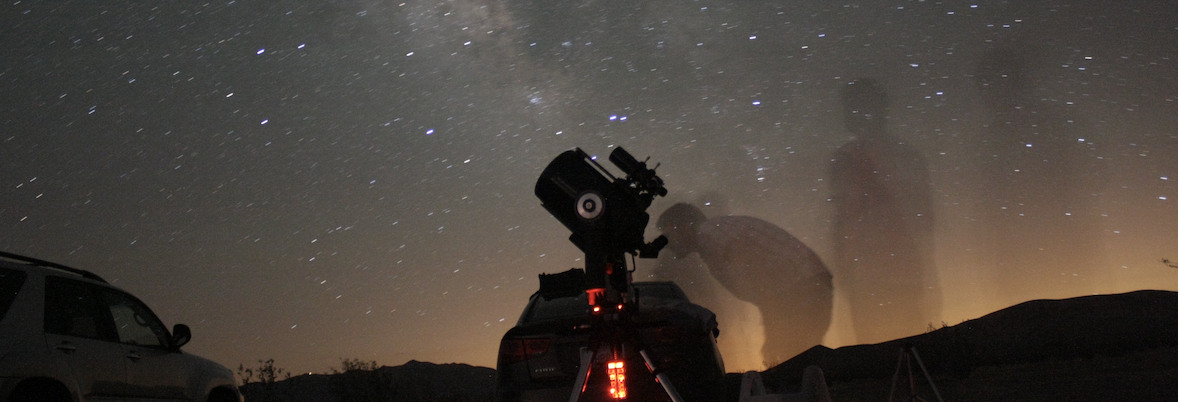Episodes

Wednesday Apr 29, 2020
May 2020
Wednesday Apr 29, 2020
Wednesday Apr 29, 2020
WATCH this on YouTube
LISTEN as a podcast on Podbean, Stitcher, or iTunes
Social Media: @mrwebbpv on Twitter and Instagram
@pvplanetarium on Facebook, Twitter, and Instagram
Brilliant week-long morning dance of the planets and our Moon paired with warmer nights and a challenging evening conjunction and close encounter at the end of the month make May a wonderful month to get out under the stars.
Welcome to Observing With Webb, where a high school astronomy teacher tells you what you’re looking at, why it’s so cool, and what you should check out later this month…at night.
EVENTS...
Full Moon – 7th (Visible all night)
Last Quarter Moon – 14th (Visible from midnight into the morning)
New Moon – 22nd (darkest skies)
First Quarter Moon – 29th (Visible until midnight)
11th – 17th – Close Encounter – Moon, Jupiter, Saturn, Mars – Get out after 4:00am but before 5:30am DST each of these mornings to enjoy, moving left to the right, the lineup of Mars, Saturn, and Jupiter in the S, but also enjoy the Moon crashing through the party. The waning gibbous Moon will be about 14˚ to the right of Jupiter on the 11th, 3˚ directly below Jupiter on the 12th, 8˚ below and to the left of Saturn on the 13th. On the 14th, it becomes a third quarter Moon, and is about a fist-width to the right of Mars, moving to about 4˚ down and to the left of Mars the next morning. The next two mornings, the Moon is more of a crescent, and creeps away from the planetary lineup, but is still part of the morning party.
21st – Conjunction - Venus, Mercury – Get out after sunset and watch the Western sky. The first point of light you’ll find is Venus. As it gets darker, see if you can find Mercury, just one pinky-width down and to the left of Venus.
23rd – 24th – Close Encounter - Venus, Moon, Mercury – Get out after sunset and watch the Western sky on the 23rd. Again, the first point of light you’ll find is Venus. As it gets darker, see if you can find Mercury and the very young and thin crescent Moon. Mercury is 3˚ up and to the left of Venus, and the Moon is about 5˚ below Venus. You might have better luck on the 24th, however, considering the Moon moves higher and is thicker, just 6˚ up and to the left of Mercury.
Naked-eye PLANETS...
Sunset
- Venus (West) – This is your last chance to check out Venus, as it gets lower and lower in the West every evening. It starts out 35˚ above the horizon, and drops out of sight during the last week of May for its inferior conjunction, when it’s between the Sun and Earth. If you have a telescope, you’ll be able to see the shift from a thick crescent Venus to a thin crescent Venus throughout the month. If you miss it, you’ll have to wake up before sunrise, as it transfers over to a morning star for the rest of the year.
Throughout the night – None
Morning
- Saturn, Jupiter, Mars – The main show in the mornings is the lineup of these three planets. Get out well before sunrise (sunrise is between 6:00am and 5:30am) any morning, and start by finding the brightest spot in the South, which will be Jupiter. From here, you can find Saturn and Mars. Saturn will be the bright spot that is consistently less than a fist-width to the left of Jupiter all month. Mars has a different story, starting out 20˚ or two fist-widths away from Saturn, and then moves further and further left each day, approaching 40˚ or four fist-widths away from Saturn by the 31st.
CONSTELLATIONS...
Use a sky map from www.skymaps.com to help you out.
After Dinner, Before Bed:
Leo, Big Dipper, Bootes – Leo will be high in the South, almost straight above you. It has a backward question mark with a right triangle to the left of the question. If you look above Leo, behind you and high in the sky, you should find the Big Dipper: seven very bright stars that form a spoon shape. Now if you take the handle of the Dipper, follow its curve to the next bright star you see, about 30˚ away, which is Arcturus. “Follow the arc to Arcturus.” That’s the brightest star in Bootes, which looks like a kite. Take that same curve, and follow it about another 20˚ to “speed on to Spica”, the brightest star in Virgo, one of my favorite constellations, since it reminds me of the Dickinson Mermaid.
Before Work:
Lyra, Hercules, Hercules Cluster – Look pretty much straight above you, and find the brightest star up there. You’ll notice a parallelogram attached to it. This is the brightest star Vega, part of the constellation Lyra, the harp. Next to that is a keystone shaped constellation called Hercules. On the right side of the keystone is a small cluster of stars known at the Hercules Cluster, which is a collection of hundreds of stars on the outskirts of our galaxy. Given how high it is in the sky right now, you might catch its faint fuzziness with your naked eye, but a set of binoculars or a small telescope will really help you see it.
Don’t forget this podcast is found on my Podbean page, Stitcher, and iTunes. There’s also a video version on my YouTube Channel and I can be found on Twitter and Instagram as @mrwebbpv. The Pequea Valley Planetarium and its events and updates are on Facebook, Twitter, and Instagram as @pvplanetarium.


No comments yet. Be the first to say something!